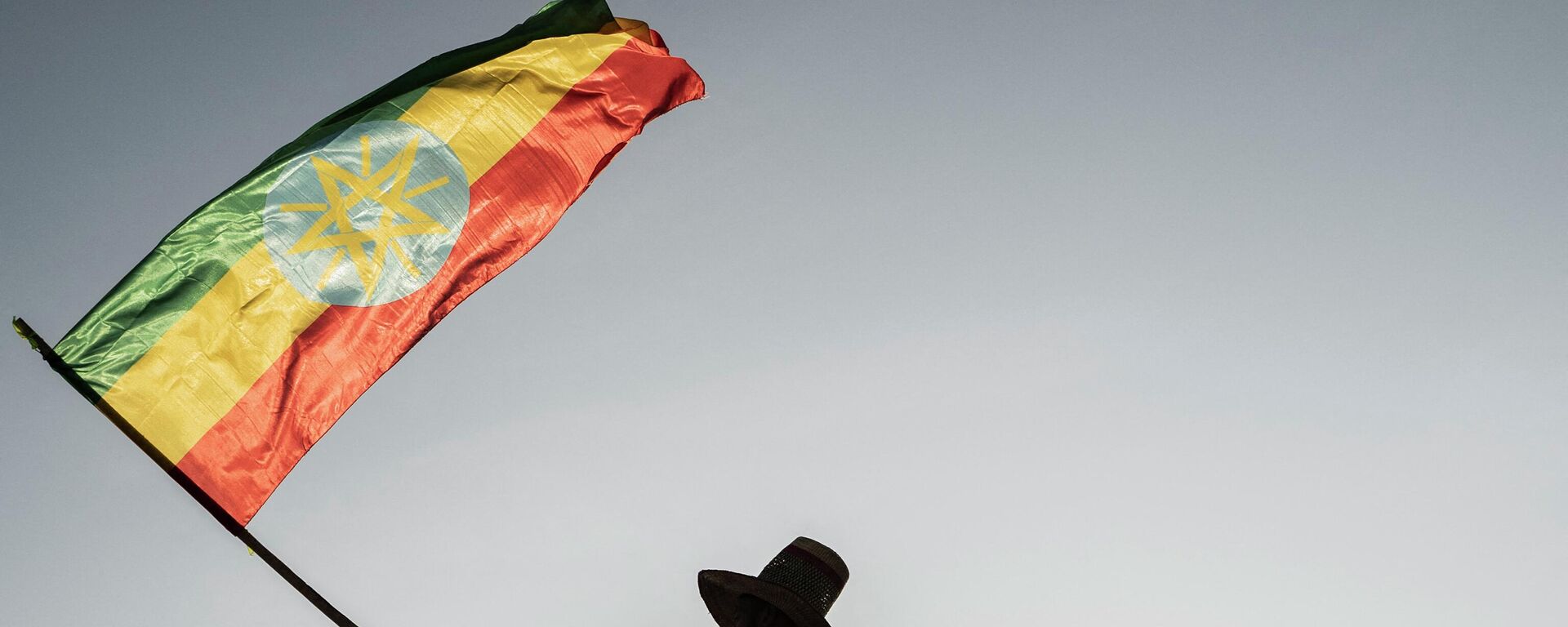https://en.sputniknews.africa/20230824/new-brics-members-countries-economic-performances--1061603095.html
New BRICS Members: Countries' Economic Performances
New BRICS Members: Countries' Economic Performances
Sputnik Africa
The 15th edition of the BRICS summit was crowned by the accession of six new members to the group. Sputnik presents a brief overview of the key features of the... 24.08.2023, Sputnik Africa
2023-08-24T19:29+0200
2023-08-24T19:29+0200
2023-08-24T19:29+0200
features
brics
brics expansion
brics summit
economic growth
argentina
ethiopia
iran
saudi arabia
united arab emirates (uae)
https://cdn1.img.sputniknews.africa/img/07e7/08/18/1061603827_158:501:2847:2013_1920x0_80_0_0_b170a194dca4153143de51865948956d.jpg
With the addition of these six new countries, the BRICS are enriched by economic partners who are major players on a global scale, as well as in their own geographical regions. Find out more about their key economic performances and main sectors of industry and international trade.Argentina The Argentine Republic covers an area of 2.8 million km2, with a population of 46.2 million, according to 2022 data. According to the World Bank (WB) for 2022, the country's GDP is $632.8 billion, making it the third-largest economy in the region (after Brazil and Mexico).In terms of GDP structure, the service sector accounts for 53%, industry for 15%, agriculture and forestry, fishing and hunting for 6.4%.Egypt The Arab Republic of Egypt covers an area of 1 million km2, with a population of 110.99 million. According to the World Bank, the country's GDP for 2022 will be $476.8 billion, making it the largest economy in North Africa and the fifth largest in the Middle East. The service sector accounts for 51.4% of GDP, industry for 32.7% and agriculture for 10.9%. The country is a member of the African Union.IranThe Islamic Republic of Iran covers an area of 1.7 million km2, with a population of 88 million. The country's GDP is $388.5 billion (World Bank data for 2022), making it the sixth-largest economy in the region. Iran has the world's third-largest confirmed oil reserves (12% of global reserves) and the world's second-largest gas reserves (17%). The most important sector of the Iranian economy is the service sector, which accounts for 51% of GDP, oil production – 23%, manufacturing and mining – 13%, agriculture - 10%. Iran is a member of the Organization of Petroleum Exporting Countries (OPEC). Its membership of the Shanghai Cooperation Organization was announced in July 2023.United Arab EmiratesThe United Arab Emirates (UAE) covers an area of 83,600 km2 and has a population of 9.9 million. According to the World Bank, the volume of its GDP in 2022 will be $507.53 billion, making the country the third-largest economy in the Middle East region. The economy is based on the extraction and export of crude oil and gas, which accounts for over 40% of GDP. The Emirates have the eighth largest confirmed oil reserves (5.6% of world reserves) and the seventh largest gas reserves in the world (3%). The country is a member of OPEC.Saudi ArabiaThe Kingdom of Saudi Arabia covers an area of 2.1 million km2, with a population of 35.3 million. According to the World Bank, the country's GDP in 2022 will be $1,100 billion, making it the largest economy in the Middle East region. The country is also the world's largest oil producer. Oil production accounts for 46% of GDP, services for 36%, manufacturing for 10%, construction and distribution of electricity, gas and water for 6%, agriculture, forestry and fishing for 2%. The country is a member of OPEC.EthiopiaThe Federal Democratic Republic of Ethiopia covers an area of 1.1 million km2 and has a population of 123.4 million. GDP is $126.8 billion (World Bank data for 2022), making it the third-largest economy in sub-Saharan Africa. Ethiopia is a predominantly agricultural country and one of the world's leading coffee exporters. Agriculture accounts for 37.6% of GDP, industry for 22.7% and services for 36.6%. The country is a member of the African Union and the Common Market for Eastern and Southern Africa.The 15th BRICS Summit was the largest meeting of heads of state and government representatives of the Global South in recent years. The invitees included the leaders of 54 African countries. In addition to Argentina, Egypt, Iran, the United Arab Emirates, Saudi Arabia and Ethiopia, a new list of possible members of the association will be prepared for the next summit.
https://en.sputniknews.africa/20230824/sa-sherpa-on-brics-expansion--its-future-1061590375.html
https://en.sputniknews.africa/20230824/joining-brics-will-allow-ethiopia-to-intensify-trade-cooperation-says-ambassador-in-moscow-1061588119.html
argentina
ethiopia
iran
saudi arabia
united arab emirates (uae)
egypt
russia
latin america
middle east
north africa
east africa
Sputnik Africa
feedback@sputniknews.com
+74956456601
MIA „Rossiya Segodnya“
2023
Samantha Arias
https://cdn1.img.sputniknews.africa/img/07e7/0a/18/1063050346_115:0:834:719_100x100_80_0_0_1682778780537fd5aa8dd2536a012c1b.jpg
Samantha Arias
https://cdn1.img.sputniknews.africa/img/07e7/0a/18/1063050346_115:0:834:719_100x100_80_0_0_1682778780537fd5aa8dd2536a012c1b.jpg
News
en_EN
Sputnik Africa
feedback@sputniknews.com
+74956456601
MIA „Rossiya Segodnya“
Sputnik Africa
feedback@sputniknews.com
+74956456601
MIA „Rossiya Segodnya“
Samantha Arias
https://cdn1.img.sputniknews.africa/img/07e7/0a/18/1063050346_115:0:834:719_100x100_80_0_0_1682778780537fd5aa8dd2536a012c1b.jpg
brics, brics expansion, brics summit, economic growth, argentina, ethiopia, iran, saudi arabia, united arab emirates (uae), egypt, russia, african union (au), organization of petroleum exporting countries (opec), latin america, middle east, north africa, east africa, the shanghai cooperation organization (sco), common market for eastern and southern africa (comesa)
brics, brics expansion, brics summit, economic growth, argentina, ethiopia, iran, saudi arabia, united arab emirates (uae), egypt, russia, african union (au), organization of petroleum exporting countries (opec), latin america, middle east, north africa, east africa, the shanghai cooperation organization (sco), common market for eastern and southern africa (comesa)
New BRICS Members: Countries' Economic Performances
Samantha Arias
Producer / Podcast host
The 15th edition of the BRICS summit was crowned by the accession of six new members to the group. Sputnik presents a brief overview of the key features of the countries (Argentina, Egypt, Ethiopia, Iran, Saudi Arabia and the United Arab Emirates) that will officially join the BRICS from January 1, 2024.
With the addition of these six new countries, the BRICS are enriched by economic partners who are major players on a global scale, as well as in their own geographical regions. Find out more about their key economic performances and main sectors of industry and international trade.
The Argentine Republic covers an area of 2.8 million km
2, with a population of 46.2 million, according to 2022 data. According to the World Bank (WB) for 2022, the country's GDP is $632.8 billion, making it the third-largest economy in the region (after Brazil and Mexico).
In terms of GDP structure, the service sector accounts for 53%, industry for 15%, agriculture and forestry, fishing and hunting for 6.4%.
The Arab
Republic of Egypt covers an area of 1 million km
2, with a population of 110.99 million. According to the World Bank, the country's GDP for 2022 will be $476.8 billion, making it the largest economy in North Africa and the fifth largest in the Middle East. The service sector accounts for 51.4% of GDP, industry for 32.7% and agriculture for 10.9%. The country is a member of the African Union.
The Islamic
Republic of Iran covers an area of 1.7 million km2, with a population of 88 million. The country's GDP is $388.5 billion (World Bank data for 2022), making it the sixth-largest economy in the region. Iran has the world's third-largest confirmed oil reserves (12% of global reserves) and the world's second-largest gas reserves (17%).
The most important sector of the Iranian economy is the service sector, which accounts for 51% of GDP, oil production – 23%, manufacturing and mining – 13%, agriculture - 10%. Iran is a member of the Organization of Petroleum Exporting Countries (OPEC). Its membership of the
Shanghai Cooperation Organization was announced in July 2023.
The
United Arab Emirates (UAE) covers an area of 83,600 km
2 and has a population of 9.9 million. According to the World Bank, the volume of its GDP in 2022 will be $507.53 billion, making the country the third-largest economy in the Middle East region.
The economy is based on the extraction and export of crude oil and gas, which accounts for over 40% of GDP. The Emirates have the eighth largest confirmed oil reserves (5.6% of world reserves) and the seventh largest gas reserves in the world (3%). The country is a member of OPEC.
The
Kingdom of Saudi Arabia covers an area of 2.1 million km
2, with a population of 35.3 million. According to the World Bank, the country's GDP in 2022 will be $1,100 billion, making it the largest economy in the Middle East region.
The country is also the world's largest oil producer. Oil production accounts for 46% of GDP, services for 36%, manufacturing for 10%, construction and distribution of electricity, gas and water for 6%, agriculture, forestry and fishing for 2%. The country is a member of OPEC.
The Federal Democratic Republic of Ethiopia covers an area of 1.1 million km
2 and has a population of 123.4 million. GDP is $126.8 billion (World Bank data for 2022), making it the third-largest economy in sub-Saharan Africa.
Ethiopia is a predominantly agricultural country and one of the world's leading coffee exporters. Agriculture accounts for 37.6% of GDP, industry for 22.7% and services for 36.6%. The country is a member of the African Union and the Common Market for Eastern and Southern Africa.
The 15th BRICS Summit was the largest meeting of heads of state and government representatives of the Global South in recent years. The invitees included the leaders of 54 African countries. In addition to Argentina, Egypt, Iran, the United Arab Emirates, Saudi Arabia and Ethiopia, a new list of possible members of the association will be prepared for the next summit.




